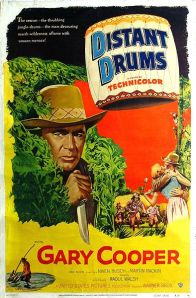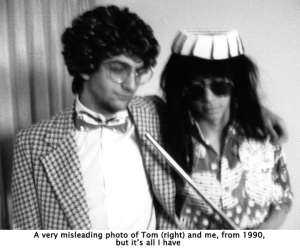At the end of my last post–Wilhelm Hails a Cab (which I recommend you read before you continue)–I said its creation was more interesting than the end result. Really, I should have written that it was more “interesting” than the end result, because it’s all relative. Shoot, you already know how this post is going to turn out. Anyway, here’s my recreation of the chills, thrills and spills of bloggin’!
First, let me quickly bring you up to last month:
1984. At age 15 I discover Prince. His music becomes some of my favorite “Leave me alone, World!” music on the school bus. Naturally, I repeatedly listen to the 1999 LP under headphones, including the song “Lady Cab Driver.” (Didn’t everyone in the 80s?)
1988. I’m watching The Sting and hear in the background, “Hey, that’s my taxi!” With Google-like speed, my brain pulls up the identical man on Prince’s LP. I plotz. I hear it 4 more times in the film. I plotz 4 more times.
1992. While in film school, I watch All About Eve. Behind Bette Davis and George Sanders, I hear that damn guy yelling for his taxi. I plotz, college 90s-style.
1997. By this time, I’ve become a sound editor in NYC, and sorting through some sound FX CDs one day, I hear a track of city noise called “traffic, period 1931 New York City: cars, street car bell, horns, city rumble, ambience.” You can guess what I heard and what I did. (I’ve included the ambience track below.)
And that brings us to last month. Nowadays, I’m always groping for a blog topic. (Fellow bloggers will vouch: the blog is always hungry. You gotta feed that beast.) I remember that poor bastard missing his cab—for decades!—and think I’ve struck gold: the Perfect Post Topic.
First, I convert The Sting’s entire soundtrack to an mp3 and put it on my iPod, listening past the dialog and music, noting every “Hey! That’s my taxi!” Initially, I did this while running errands in the city but stopped when I almost got hit by a car. (My Tip of the Day: Do NOT obsessively listen to traffic sounds under headphones when walking in an urban environment. It’s like tripping in an Escher painting.)
Next, I move to All About Eve and discover that my ears aren’t what they used to be. I’ll prove it. For all of the clips in my last post, I pumped up the sound of the horns and yelling, to compensate for crappy computer speakers. So here’s that portion with Bette Davis, first as I posted it and then as I heard it 15 years ago:
What the fuck? Was I the Bionic Woman? How the did I hear those horns, under the dialog, and say, “Hey, that’s from ‘Lady Cab Driver’”? Believe me, this is a 41-year-old man envying his once-perfectly-working, youthful body.
After I stop moping about the sands of time, I realize my blog predicament: I’m one film light. I can’t have a post that’s Film Clip-Film Clip-Prince Punchline. No, it has to be Film Clip-Film Clip-Film Clip-Prince Punchline! 3 films. Everyone knows that. Anything less would be lame. Weak sauce.
I need one more film with that guy hailing a taxi, preferably from something older than All About Eve. So what do I do? I say, “WWBBD?” which is short for “What Would Ben Burtt do?” Of course, Ben’s the sound editing legend behind Star Wars and dozens of other classics. He’s also a sound FX archivist (i.e. he found the “Wilhelm”), so I pull some strings and get his e-mail address.
 Ben Burtt doesn’t know me from Adam, but, class act that he is, he responds. (What a guy! What a thrill!) He expresses empathy for my situation, but admits he’s unfamiliar with that traffic ambience. “My specialty is more in the fantasy-gunshot-war part of the spectrum,” he writes. However, he suggests I might have luck listening to Samuel Fuller’s 1953 Pickup on South Street and leaves me with, “Keep Up The Research!”
Ben Burtt doesn’t know me from Adam, but, class act that he is, he responds. (What a guy! What a thrill!) He expresses empathy for my situation, but admits he’s unfamiliar with that traffic ambience. “My specialty is more in the fantasy-gunshot-war part of the spectrum,” he writes. However, he suggests I might have luck listening to Samuel Fuller’s 1953 Pickup on South Street and leaves me with, “Keep Up The Research!”
My hopes refueled, I rent the film and spot-check it, listening closely to every street scene. No luck. Undaunted, I dive in again, listening to the whole damn film under headphones. I discover that one shot I missed my first go ’round–15 seconds of a woman crossing the street—has some familiar horns in it. Yes, the horns. But no “Hey! That’s my taxi!” Aw, man! But, hey, at least it was a solid lead.
Finally I get a rational idea: Pickup’s sound editor is Harry K. Leonard. I check him out on IMDB. Turns out he sound edited a whopping 285 films, 179 before Pickup on South Street. I actually have some of these films, and, with Woodward-and-Bernstein-like zeal, I put on the ol’ headphones and start listening with fresh ears, one after another.
Some films, like Think Fast, Mr. Moto, have the horns but not the cab hailing. (Can you imagine how pissed I was every time I heard the horns but no dude saying, “Hey! That’s my taxi!”?) This goes on late at night, for a few nights, sitting at my desk, under headphones, my ears squinting to hear beyond such lines as “You haven’t called Chop Suey in on the case, have ya’, Chief?” and finally—finally!—he misses a taxi in the Charlie Chan film Murder Over New York! Whew.
And that’s how I write a post.
Was it worth it? Hell yeah! For starters, this trek covers 26 years of passion for film and music; a career as a sound editor; and my quest for an understanding of the unknown. Not bad.
Also, after alerting Ben Burtt about my discovery, he wrote, “Good job”! Shit, that’s an e-mail suitable for framing.
And most importantly, listening to these old films—scrutinizing them–was fascinating. It’s humbling to hear the care these pioneers of sound crammed into their films, especially when you realize that the average Depression-era movie theater probably sounded like junk. Nice to learn that the sound editing profession has always been a haven for the obsessives.
They say God is in the details, but I say God is in the ambiences.
__________________________________________________
Here’s the traffic ambience. The cab-hailing is towards the end. The whole thing is really cool, an awesome documentary of street life from 80 years ago.






